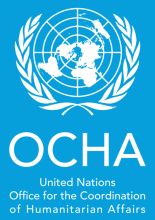Resource information
Executive Summary: "The instability in Kachin and Shan States that started in
early June 2011 has resulted in the displacement of
populations, loss of lives and livelihoods and damages
to infrastructure. The Kachin State government, local
and community]based organizations have been providing
some assistance to the displaced since the outset of
the conflict. International organizations have been
providing limited assistance through support to local
and community]based organizations, while continuing
to advocate for humanitarian assistance to be provided
to all civilians in need.
Following a Government invitation, a rapid needs assessment
was conducted in 39 locations in some areas
of five townships: Bhamo, Momauk, Myitkyina,
Khaunglanhpu and Waingmaw, and targeted 5,925
internally displaced persons (IDPs). Two townships ]
Mansi and Shwegu ] could not be assessed due to security
reasons. Of the total assessed population, the assessment
findings indicate that 57% are female and
56% under]18. The IDPs are temporarily residing in
community buildings, temporary camps/shelters or
with host families. Most of the IDPs are located in urban
areas, while those in rural areas are primarily being
sheltered by host families. While the number of
IDPs is fluctuating on a daily basis, the assessment
found that a large majority of those assessed ] 4,026 ]
has been displaced for over two months. Among people
with special needs the survey identified 70 unaccompanied
minors, 196 female] or child]headed households,
40 chronically ill and 36 persons with disabilities.
In general, due to the easier accessibility and the presence
of a larger number of aid agencies, the IDPs in
Myitkyina and Waingmaw have been receiving more
assistance than those in Bhamo and Momauk. Access
and delivery of assistance for many of the locations
continue to be a major challenge, particularly in the
southern townships of Bhamo, Momauk, Mansi and
Shwegu given the security situation and damage to
infrastructure, including access routes.
Living conditions, particularly in larger temporary
camps/shelters and community buildings where the
population density is high, are challenging. The assessment
found that 20 of the 39 surveyed locations are in
urgent need of additional shelter assistance. Temporary
camps/shelters would need to be upgraded with
improved roofing, more durable and safer shelters,
additional numbers of tents to lessen the population
density, allocation of cooking spaces and relocation of
latrines further away from the living quarters. These
measures would make the temporary camps/shelters
healthier and safer for children and women. IDPs in
community buildings such as churches and community
halls also suffer from over]population and the resulting
lack of adequate sleeping space as well as lack of privacy
for families.
I. EXECUTIVE SUMMARY While some non]food items (NFIs) have been provided
by the Government and local and community]based
organizations, to date, most of the IDPs require additional
NFI support, including plastic sheeting, cooking
utensils, blankets and clothes. These needs are most
urgent in Bhamo and Momauk.
Over half of IDPs in temporary camps/shelters and
community buildings are facing food access issues.
While food assistance has temporarily alleviated concern
over immediate food shortages in over half of the
locations that reported food access difficulties, a number
of camps have yet to receive food assistance. The
food security situation in Khaunglanhpu]La Jar camp in
Khaunglanhpu and AungThar Baptist Church in Bhamo
is of concern, and food assistance should be considered.
People staying in host families in Momauk, in
Momauk Baptist Church and 3]mile Kachin Baptist
Church in Bhamo are experiencing lack of food stocks,
and the food security situation in these locations would
need to be explored further. Overall, the IDPs indicated
a need for more diversified food assistance, which
should be explored given the reported observable malnutrition
in the locations assessed. The assessment
suggests that the nutritional status of children needs to
be further investigated.
While access to water for domestic and hygiene uses is
sufficient, availability of drinking water is an issue, with
only 40% of IDPs having access to sufficient quantities
of safe drinking water. The issue is particularly critical
in Bhamo where all locations reported insufficient access
to drinking water. Latrine use is wide]spread and
aid agencies have provided basic sanitary facilities in
all temporary camps/shelters and community buildings.
However, some of the locations with larger number of
IDPs need more latrines. Some latrines would need to
be upgraded for sanitary and safety reasons. Hygiene
promotion would be needed in a majority of the assessed
locations, along with provision of hygiene items.
There has been no report of disease outbreak or mortality
cases since June 2011 in surveyed locations. Over
half of the sites currently have access to health care
services provided by basic health staff, while the others
Kachin Rapid Assessment |1 5
in 14 locations only receive minimal health support
through community health workers. Measles immunization
campaign is needed in 31 locations, where a
limited number of under]2 children has records of having
had measles vaccination. Bed nets are needed in a
majority of the locations. Essential medical supplies
are needed in 35 out of the 39 locations.
Some 1,055 primary school children and 1,249 secondary
to high school children were identified amongst
the assessed IDPs. Primary school children in all locations
have access to varying degree of schooling support
] either access to nearby school facilities or to
temporary learning spaces ] which they regularly attend.
However, only a few secondary and high school
children seem to attend school, due to lack of access
and their contribution to household chores, particularly
in the absence of household heads.
Education materials are in short supply at all locations.
Temporary learning spaces are not sufficiently
equipped. A majority of the schools do not have adequate
water and sanitation facilities. Early Childhood
Development (ECD) centers have been established in
six locations, benefiting 201 or 20% of all under]five
IDP children. Efforts to construct additional ECD centers
are currently ongoing.
The number of under]18 separated or unaccompanied
children was 221 at the time of the assessment, while
12.5% of households are either female] or childheaded.
This points to the need for preventative measures
to mitigate potential risk factors. Extra measures
for ensuring the safety of women and children would
need to be taken, particularly in the temporary camps/
shelters, including improved lighting at night, separate
bathing spaces and latrines for men and women and
appointment of security focal points.
Needs of those with special needs such as the elderly
and persons with disabilities would need to be taken
into account. Fear and anxiety over the current, uncertain
situation were voiced.



